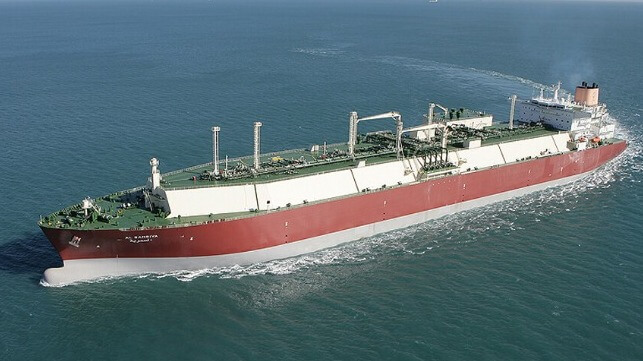LNG Carriers Continue to Lead Newbuilds with Further $2.6B in Orders

Newbuilding orders for LNG carriers, which had already been leading the industry in 2022, recorded another significant jump with an additional $2.6 billion in contracts reported by two of South Korea’s large shipbuilders. Orders in the sector are growing rapidly both as Qatar prepares for its massive expansion of production as well other emerging nations seek to fulfill the growing import demand for LNG from Europe, Japan, and China.
At mid-year, orders for large LNG carriers (exceeding 140,000 cbm) were the highest in 22 years according to Clarksons. The UK-based research company reported that orders were up by at least a quarter in 2022 with the global orderbook standing at 255 gas carriers, which represents a 40 increase in capacity. Orders in 2022, as of mid-year, had already surpassed 100 LNG carriers versus 86 orders in all of 2021.
In separate stock exchange filings, South Korea’s Daewoo Shipbuilding & Marine Engineering and Samsung Heavy Industries reported additional orders of LNG carriers. It is in keeping with Korea’s leadership in the sector and the strategy of the country’s shipbuilding industry to focus on high-value ships. LNG carriers are among the most expensive vessels exceeding the cost of simpler containerships and tankers and are only surpassed by cruise ships due to the cost of outfitting the hotel portion of the ships. The price of the average large LNG carrier has risen to approximately $240 million, twice that of a tanker or containership.
DSME recorded the largest new order with a contract for 11 vessels believed to be the latest tied to QatarEnergy’s newbuilding program in conjunction with the major shipping companies. The shipyard said it received an order valued at approximately $1.5 billion with the ships due for delivery by February 2026.
Samsung reported two separate orders for a total of four additional LNG carriers with a combined value of approximately $850 million. All four of the vessels are due for delivery in 2025 with two linked to Qatar and the other two it is believed will be deployed to carry exports from Africa’s emerging LNG facilities. Countries including Senegal and Mozambique are developing export capacities while Egypt recently announced that it was also looking to expand its exports to earn badly needed foreign currency.
The South Korean shipbuilders so far in 2022 have received orders for more than 80 LNG carriers, which represents 75 percent of the global orders. Chinese shipbuilders have been working to get a foothold in the segment but remain a distant second to Korea’s three main yards which have consistently led the segment. The European Commission highlighted this when they declined to approve the merger of Hyundai Heavy Industries and Daewoo earlier this year.
The continued demand for LNG carriers has also helped the major Korean shipyards to approach their yearly targets for new orders in the first eight months of the year. Daewoo reported with this latest order it is now at 92 percent of its target having booked nearly $8.2 billion in orders in 2022. The shipyard said at the end of August its backlog stood at 131 ships valued at nearly $29 billion. A total of 28 of the 36 vessels it has received orders for this year were LNG carriers.

that matters most
Get the latest maritime news delivered to your inbox daily.
Samsung is slightly behind having reached 82 of its order target for the year. Like its competitor, it has received 37 orders valued at more than $7 billion with 28 of them for LNG carriers.
The South Korean shipbuilding industry fell to second place in the total number of orders in August behind China for the first time since April 2022. While orders were off versus July, South Korea still received 41 percent of the new orders placed in August and overall for the year has received 43 percent of the orders. The strong orders in 2022 saw South Korea’s total backlog grow by 26 percent, more than twice the growth rate recorded by Chinese shipbuilders.
